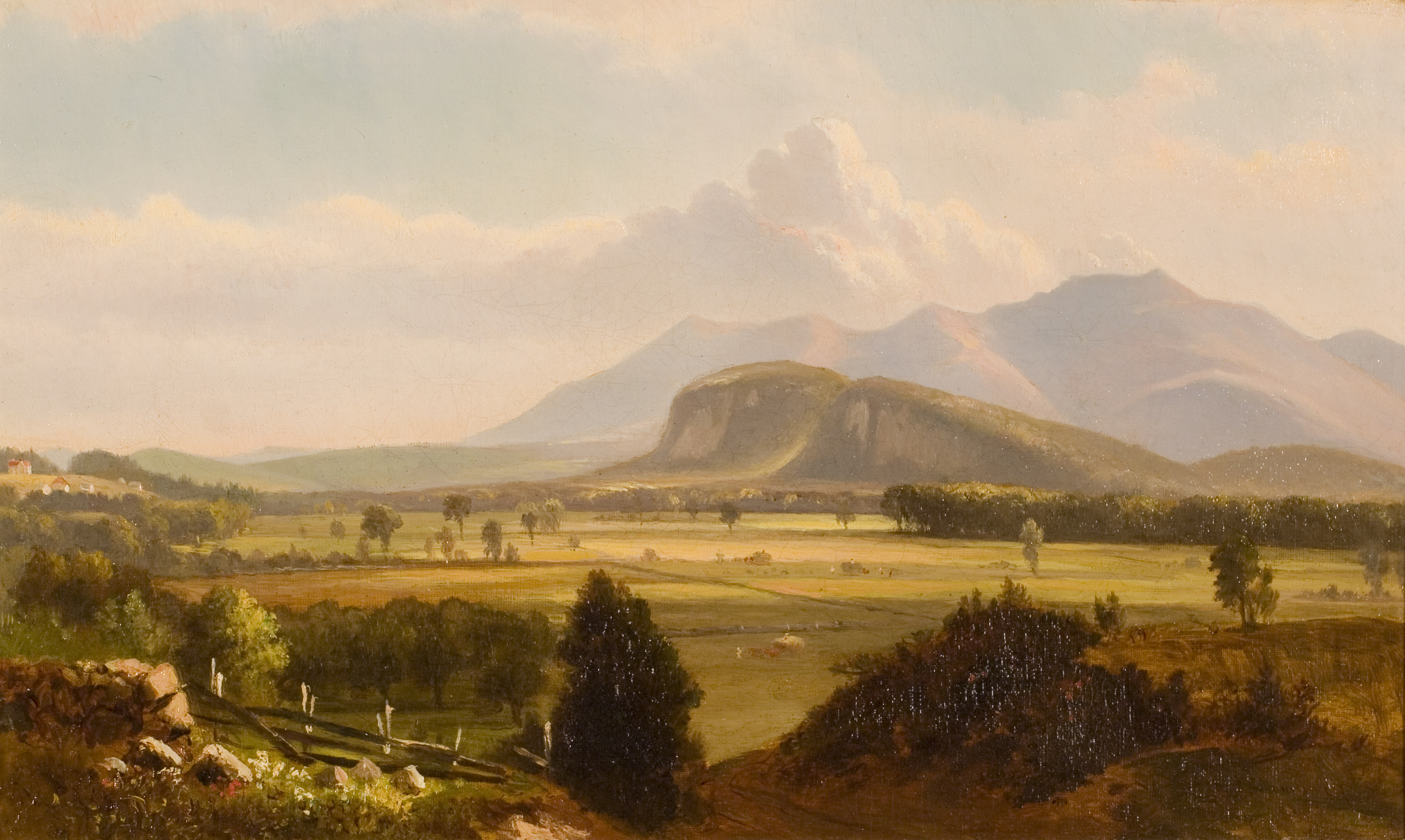In the 1850s many artists from Boston, New York, and other eastern cities were establishing their reputations by painting landscapes of the White Mountains of New Hampshire. Dedicated to capturing the natural beauty of Mount Washington and other regional high peaks, they rendered sweeping views of these rock formations from scenic vantage points such as the Intervale, or bottomlands, of North Conway and Lake Winnipesaukee. The rise of an American middle class with disposable income and the development of railroad travel during this period helped the region become a destination for artists and tourists who enjoyed the scenic charms of the White Mountains.
Though depicted as idyllic landscapes, the White Mountain terrain lays at the heart of N’Dakinna, the traditional ancestral homeland of the Abenaki (People of the Dawn Land). Since the 1600s Dutch, French, and English colonizers had violently contended Abenaki homelands. After the Revolution, Americans illegally claimed these territories through farming and logging. Although Abenaki families were displaced from seasonal subsistence routes and gathering places, they adapted to the new, touristic economy. Across the generations and still today, Abenaki people continue to call N’Dakinna their Homeland.
